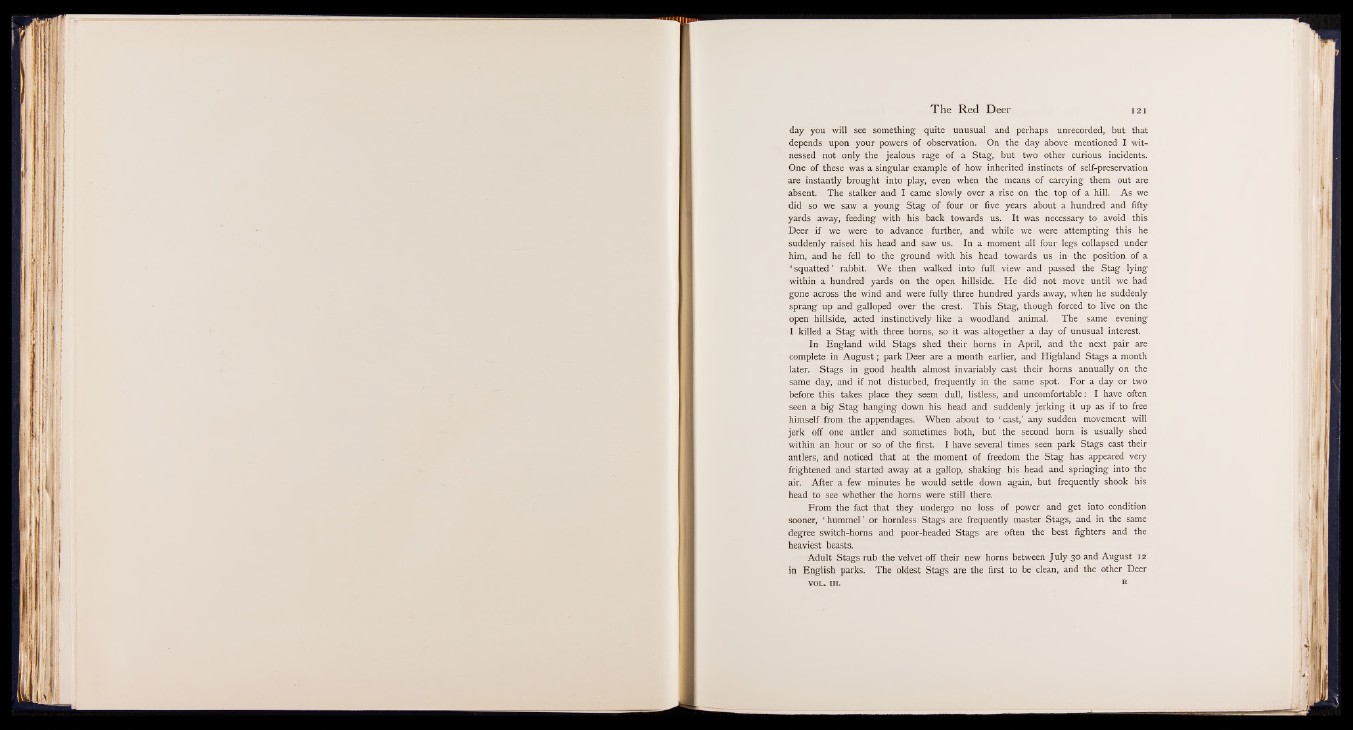
day you will see something quite unusual and perhaps unrecorded, but that
depends upon your powers of observation. On the day above mentioned I witnessed
not only the jealous rage of a Stag, but two other curious incidents.
One of these was a singular example of how inherited instincts of self-preservation
are instantly brought into play, even when the means of carrying them out are
absent. The stalker and I came slowly over a rise on the top of a hill. As we
did so we saw a young Stag of four or five years about a hundred and fifty
yards away, feeding with his back towards us. It was necessary to avoid this
Deer if we were to advance further, and while we were attempting this he
suddenly raised his head and saw us. In a moment all four legs collapsed under
him, and he fell to the ground with his head towards us in the position of a
‘ squatted ’ rabbit. We then walked into full view and passed the Stag lying
within a hundred yards on the open hillside. He did not move until we had
gone across the wind and were fully three hundred yards away, when he suddenly
sprang up and galloped over the crest. This Stag, though forced to live on the
open hillside, acted instinctively like a woodland animal. The same evening
I killed a Stag with three horns, so it was altogether a day of unusual interest.
In England wild Stags shed their horns in April, and the next pair are
complete in August; park Deer are a month earlier, and Highland Stags a month
later. Stags in good health almost invariably cast their horns annually on the
same day, and if not disturbed, frequently in the same spot. For a day or two
before this takes place they seem dull, listless, and uncomfortable: I have often
seen a big Stag hanging down his head and suddenly jerking it up as if to free
himself from the appendages. When about to ‘ cast,’ any sudden movement will
jerk off one antler and sometimes both, but the second horn is usually shed
within an hour or so of the first. I have several times seen park Stags cast their
antlers, and noticed that at the moment of freedom the Stag has appeared very
frightened and started away at a gallop, shaking his head and springing into the
air. After a few minutes he would settle down again, but frequently shook his
head to see whether the horns were still there.
From the fact that they undergo no loss of power and get into condition
sooner, ‘ hummel’ or hornless Stags are frequently master Stags, and in the same
degree switch-horns and poor-headed Stags are often the best fighters and the
heaviest beasts.
Adult Stags rub the velvet off their new horns between July 30 and August 12
in English parks. The oldest Stags are the first to be clean, and the other Deer
VOL. III.